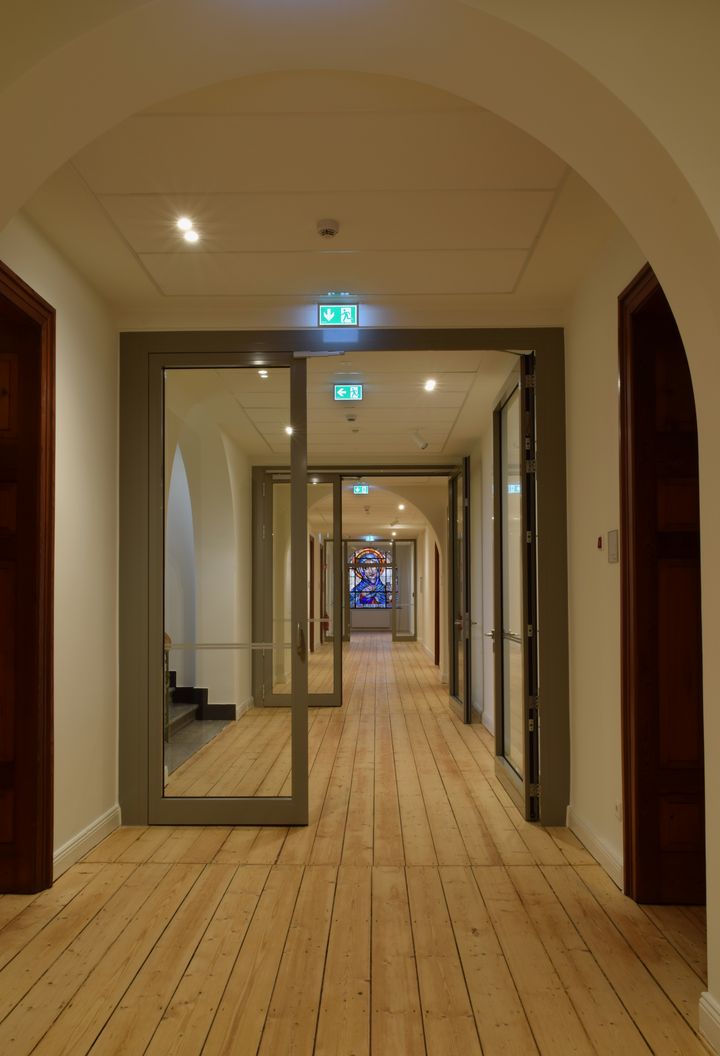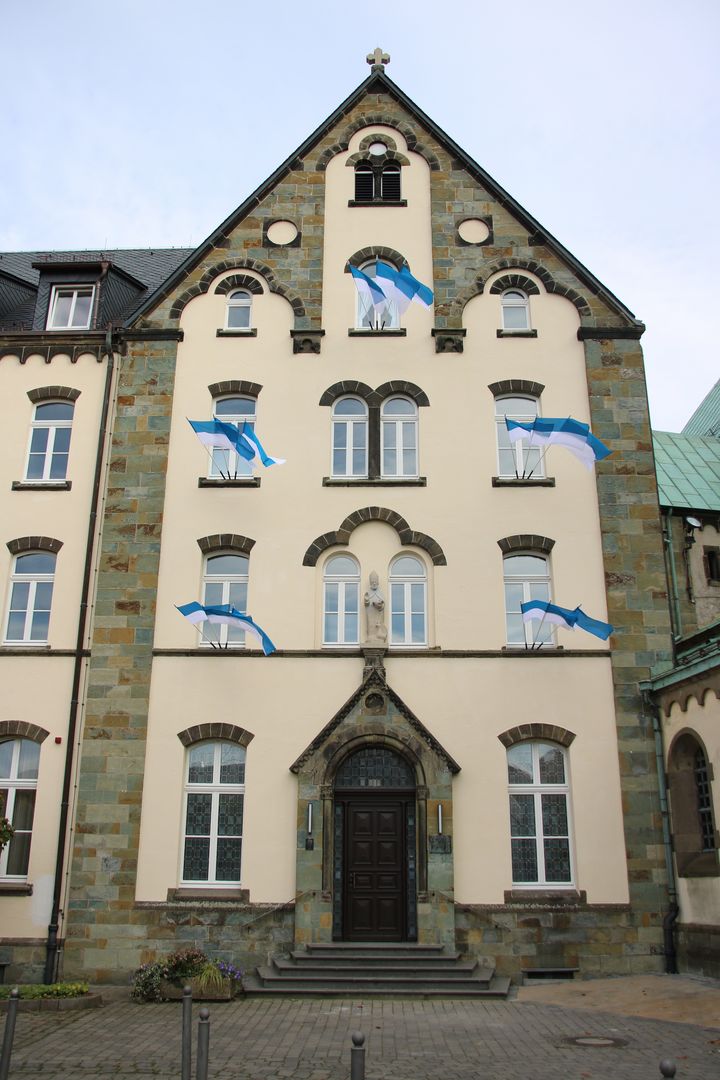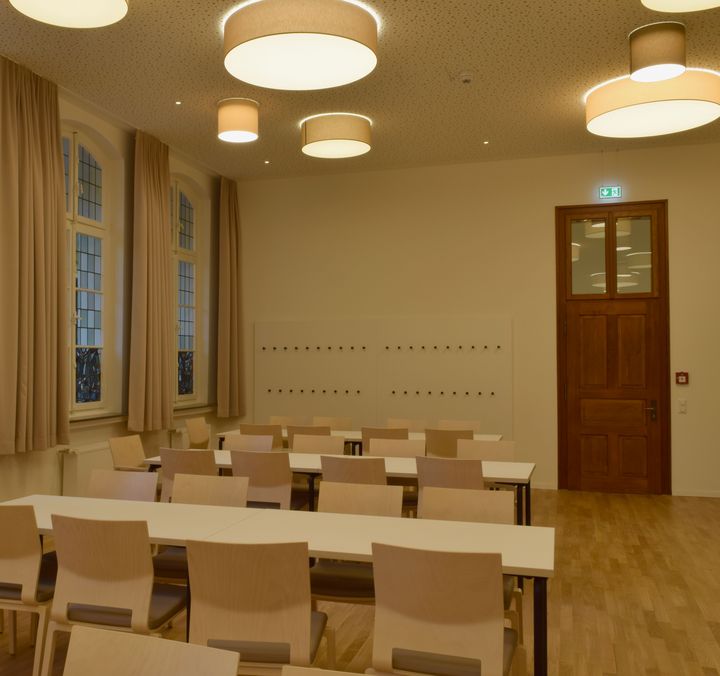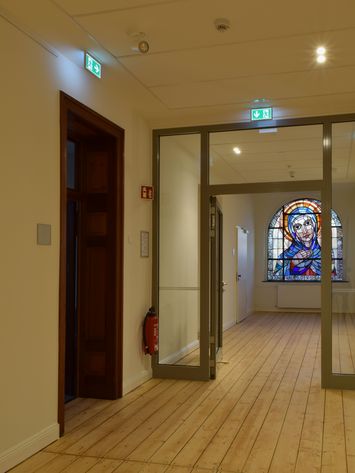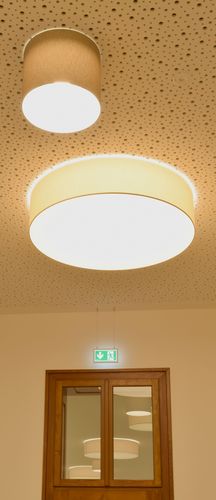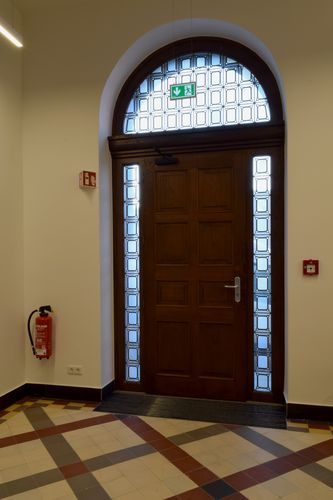Pilgrimage Centre Werl
A new home – not just for pilgrims
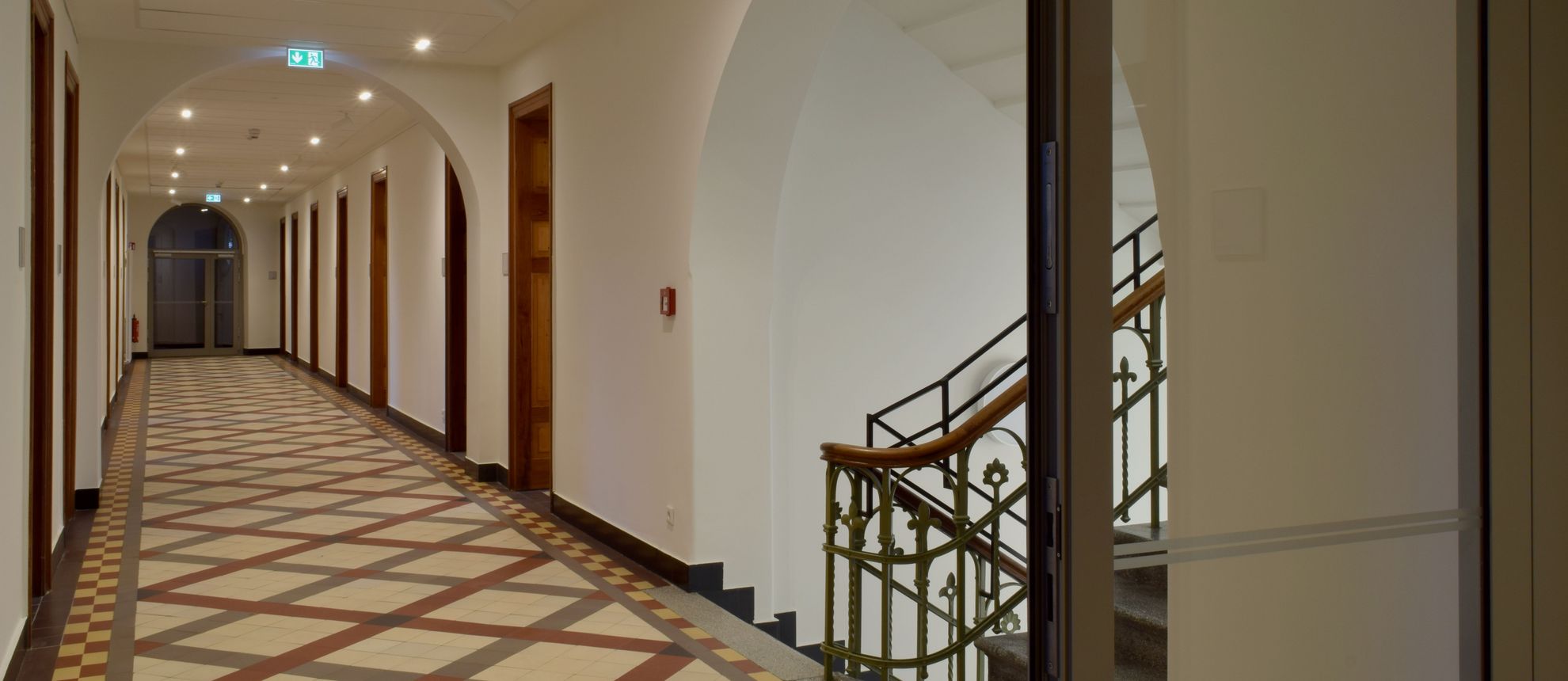
The Spanish writer Miguel de Cervantes once said: “The path is always better than the most beautiful inn”. However, anyone arriving at the new pilgrimage centre in Werl, after having covered some distance, might have their doubts about this. The pilgrim hostel in the former Franciscan monastery was rebuilt from 2020 to 2022, and now presents itself as a real jewel. Ten million euros were invested to create a harmonious ensemble that skillfully combines the old with the new. For this place of pilgrimage with its long tradition, this is a visible upgrade, well worth seeing.
Werl has been a place of pilgrimage since the 17th century. In 1661, the shrine image of the “Comforter of the afflicted” came to the city. It had previously been venerated in neighbouring Soest. This was initiated by the Cologne Elector and Archbishop Maximilian Heinrich. The transfer of the statue marked the beginning of the Marian pilgrimage in Werl. It is still alive today and has made the middle-sized town one of the most important Marian pilgrimage sites in Germany. Every year, during the pilgrimage season from May1 to All Saints’ Day, around 100,000 pilgrims come to the historic town which incidentally lies directly on the famous Way of St. James. In addition, the St. Francis Path, designed by the artists Otmar Alt, Bert Gerresheim and Christian Göbel, invites visitors to discover the town by walking.
Project overview
| Subject: | Pilgrimage centre, Werl |
|---|---|
| Client: | Archdiocese of Paderborn |
| Realisation: | 2020 to 2022 |
| Designer: | Heuel Schauerte, Meschede |
| Execution: | Lichthaus Menne, Meschede |
INOTEC sales engineer: | Lutz Dahlhoff |
| INOTEC products: |
|

From monastery to pilgrimage centre
For 170 years, the Franciscan Order took care of the pilgrimage in Werl. On September 1, 2019, the Franciscans bade farewell to the Marian pilgrimage site. The former Franciscan monastery, which is directly adjacent to the Werl pilgrimage basilica, was acquired by the Archdiocese of Paderborn and work began on converting it into a pilgrimage centre. In the same year, the monastery building in the town centre was listed in the monument register in the town of Werl. It was also in 2019, that a diocesan pilgrimage team was introduced by the Archbishop of Paderborn, to provide pastoral care for pilgrims. This team also includes pilgrimage chaplain Markus Ende, who has been working as a parish priest for 14 years. He remembers the first time he saw the inside of the building at the beginning of the renovation work: “I was overwhelmed when I first saw just how large the building is. At its peak, around 70 monks lived here. As a comparison: We are now a team of five.”
A living monument in the middle of the town centre
Work began shortly after the Franciscans left. The neighbouring printing house was demolished and an annex was built in its place. The exterior façade of the monastery was renovated and the roof renovated. In the process, the appearance was hardly changed in order to preserve the character of the listed building. On the west side, dormers that had existed in the past and had been removed over time, were rebuilt on the roof. The result is impressive: From the outside, the historic substance has been preserved, while on the inside, the building has been skillfully renovated. This not only delights Markus Ende, but also the visitors. The modern furnishings have been discreetly integrated into the interior, which has been kept in muted colours. The contractor Menne laid 90 kilometres of cable, installed fire protection alarm systems and WLAN is available throughout the building. Nothing of all this is visible – nothing flashes – the technology blends in almost invisibly. And that’s important, not only in the state-of-the-art, rentable meeting room. “The pilgrims can still be on the road living quite simply and with few possessions. They all carry a smart phone with them. That’s why every bed has a light console with a power socket, explains Markus Ende, who studied religious education.
Built for diverse use inside and outside
A pilgrims’ hall for a good 160 people has been built in this former monastery building. The entrance area has been designed to be barrier-free. There are now 80 sleeping places for pilgrims. In the four-bed room with a shared bathroom, you can stay overnight for a donation. Markus Ende explains: “ We are using a freely interpreted version of the Franciscans’ motto: He who has something, can give something, but who has nothing does not need to give anything.” Since motorized people also arrive here, on a motorcycle pilgrimage, for example, 29 parking spaces have been created as well as charging stations for e-cars and e-bikes. The complete conversion area of the former monastery is about 3,600 m² of living and usable space, including about 1,800 m² for the Marian pilgrimage Werl with administration and pilgrim accommodation. On another 350 m² there are two apartments for clergy. Overnight accommodation with 40 m² was created for two homeless people. By the way, another part of the old Franciscan monastery has remained in religious use as a convent. Ursuline sisters moved in because their previous convent had become too large for them. The living space for their convent covers 880 m². In addition, the office of the Dean for the Hellweg deanery is still housed in the building. The pilgrim convent is a self-catering house: “ We want the groups to use the gastronomy offered around us as much as possible, we don’t want to compete with that.”
The charm of this historic place
In Werl, town and church exist in an evolved symbiosis that is fruitful for both parties. The town is happy about the many pilgrim guests and has, not without reason, added the words “pilgrimage town” to its town entrance signs. For the inhabitants, the former monastery is a natural part of their living environment. Consequently, they showed great interest in the reconstruction and actively participated in guided tours, especially since the building with its idyllic garden had not been accessible until then. The city advertises this oasis of peace and tranquillity in the middle of the town. It offers a unique atmosphere with tiles and original door frames from the beginning of the 20th century, an almost unchanged room layout and the old dinner bell the Fathers used that was not only rung for meals in the refectory. Each monk had his own ringing code, for example short-long-short. If the bell rang like this, the corresponding monk knew to come in when he was in the garden, for example. “Details like this are what make the place so charming, the combination of what’s new with what is already there,” Markus Ende enthuses.
Above all: Hospitality
Whoever arrives today and rings the bell is welcome – regardless of denomination. The motives for going on a pilgrimage are manifold: Seeking, reorienting, mourning, taking time out. Markus Ende says that going on a pilgrimage opens people up to and through encounters. He also experiences this in often very moving conversations – for example, with a woman who has just lost her husband, or a young teacher who is facing the wreckage of his marriage shortly after building a house together with his partner. “It is very touching what you sometimes get to hear in just a few minutes.” For many pilgrims, on the other hand, the annual visit to Werl is simply an important ritual. There’s sharing, fellowship, a blessing – things that mean protection and companionship and offer a constant for a good feeling, especially in an increasingly pluralized world. For many the focus is on exchange in community but there is also room for contemplation. Thus, all guests in the pilgrimage monastery in Werl can design their stay to meet their individual needs.
Perfectly integrated: Safety luminaires from INOTEC
Of course, the regulations and the safety of the people were taken into consideration during the renovation. During the planning phase, the design and functionality of the SNP 1520 ES luminaire from INOTEC’s “Straight Line” series proved convincing. ES stands for “flush-mounted cable”: The homogeneously illuminated and dimmable pictogram is suspended from thin tension-carrying stainless steel cables and is thus very discreet. In the opening phase, this choice already proved to be spot on. Due to several cases of theft, a fire door was converted into a lockable door, for greater security. As a result, the escape route signage also had to changed at a later date. This was no problem at all, as it was very easy to replace the pictograms on the luminaires used. Another advantage: The control gear itself disappears into the ceiling, so there is no built-up, visible housing – this is ideal for a listed, historic building like the former Franciscan monastery. Markus Ende also emphasizes: “The safety lighting is very well integrated here and, although it’s of course highly visible, it’s not perceived as a foreign body.”
